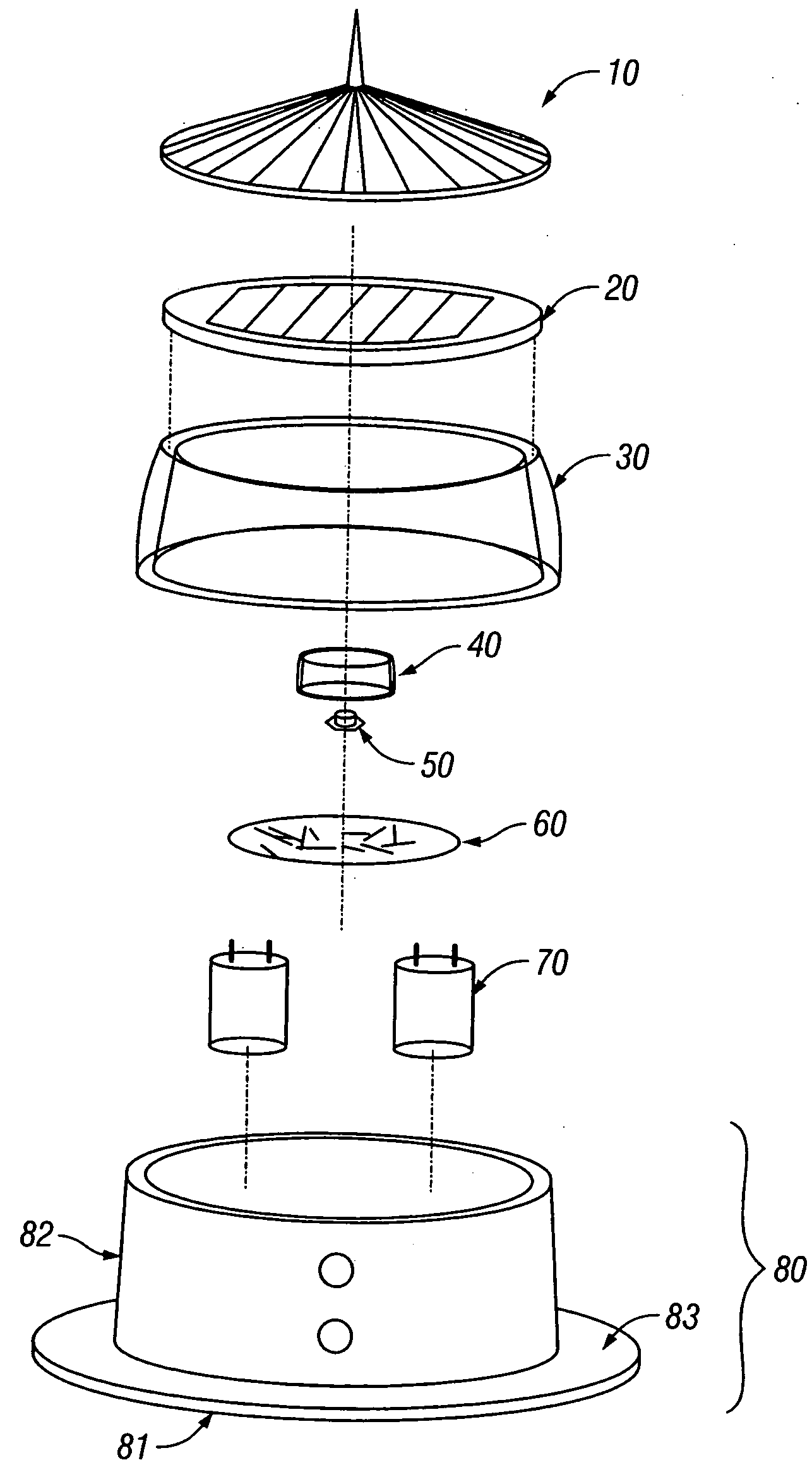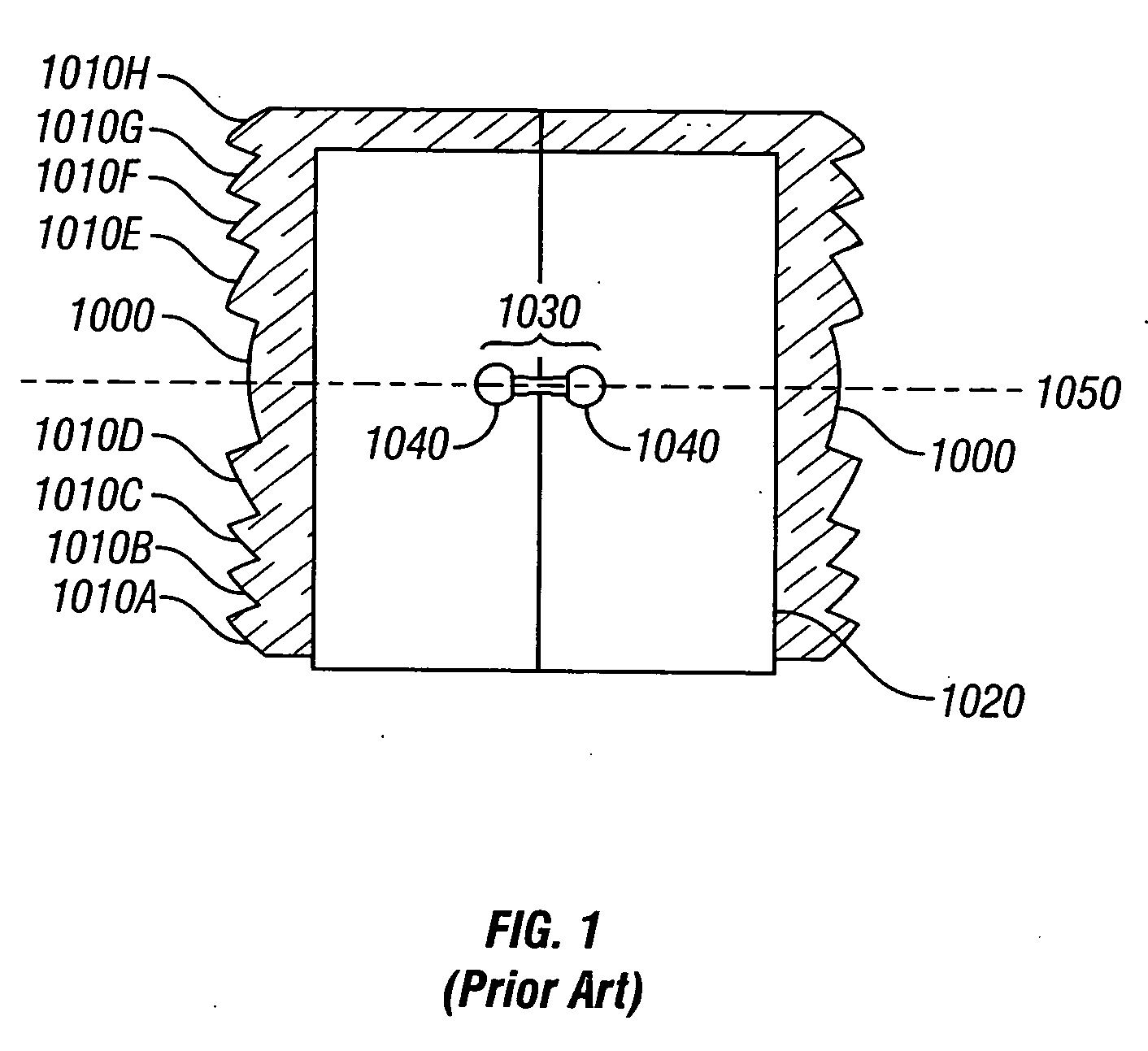Side-emitting led marine signaling device
a signaling device and led marine technology, applied in the field of side-emitting led marine signaling devices, can solve the problems of complex three-piece mold manufacturing, incandescent lamps with relatively short service life, and generally relatively tall lens of incandescent lamps, so as to achieve the effect of reducing maintenance and power consumption
- Summary
- Abstract
- Description
- Claims
- Application Information
AI Technical Summary
Benefits of technology
Problems solved by technology
Method used
Image
Examples
Embodiment Construction
[0036] Referring to FIG. 1, a cross sectional view shows a bent focal line lighting device conventionally used. The bent focal line lighting device shown in FIG. 1 is typically used in marine applications as a navigational beacon and is described in U.S. Pat. No. 6,048,083 to McDermott. As shown in FIG. 1, a contoured optic creates a plurality of focal points to intensify the light created by a plurality of LEDs. The lighting device includes a lens with a central exterior lens surface 1000 and optical steps 1010A though 1010H, and an interior lens surface 1020. The central exterior lens surface 1000 and the optical steps 1010A through 1010H represent a typical Fresnel lens contour, substituted for a single curved exterior lens surface. The lighting device includes a lamp assembly 1030 composed of a plurality of LED devices 1040 located inward of the interior lens surface 1020. Light is emitted from the LED devices 1040 of the lamp assembly 1030, and is refracted according to the bas...
PUM
 Login to View More
Login to View More Abstract
Description
Claims
Application Information
 Login to View More
Login to View More - R&D
- Intellectual Property
- Life Sciences
- Materials
- Tech Scout
- Unparalleled Data Quality
- Higher Quality Content
- 60% Fewer Hallucinations
Browse by: Latest US Patents, China's latest patents, Technical Efficacy Thesaurus, Application Domain, Technology Topic, Popular Technical Reports.
© 2025 PatSnap. All rights reserved.Legal|Privacy policy|Modern Slavery Act Transparency Statement|Sitemap|About US| Contact US: help@patsnap.com



